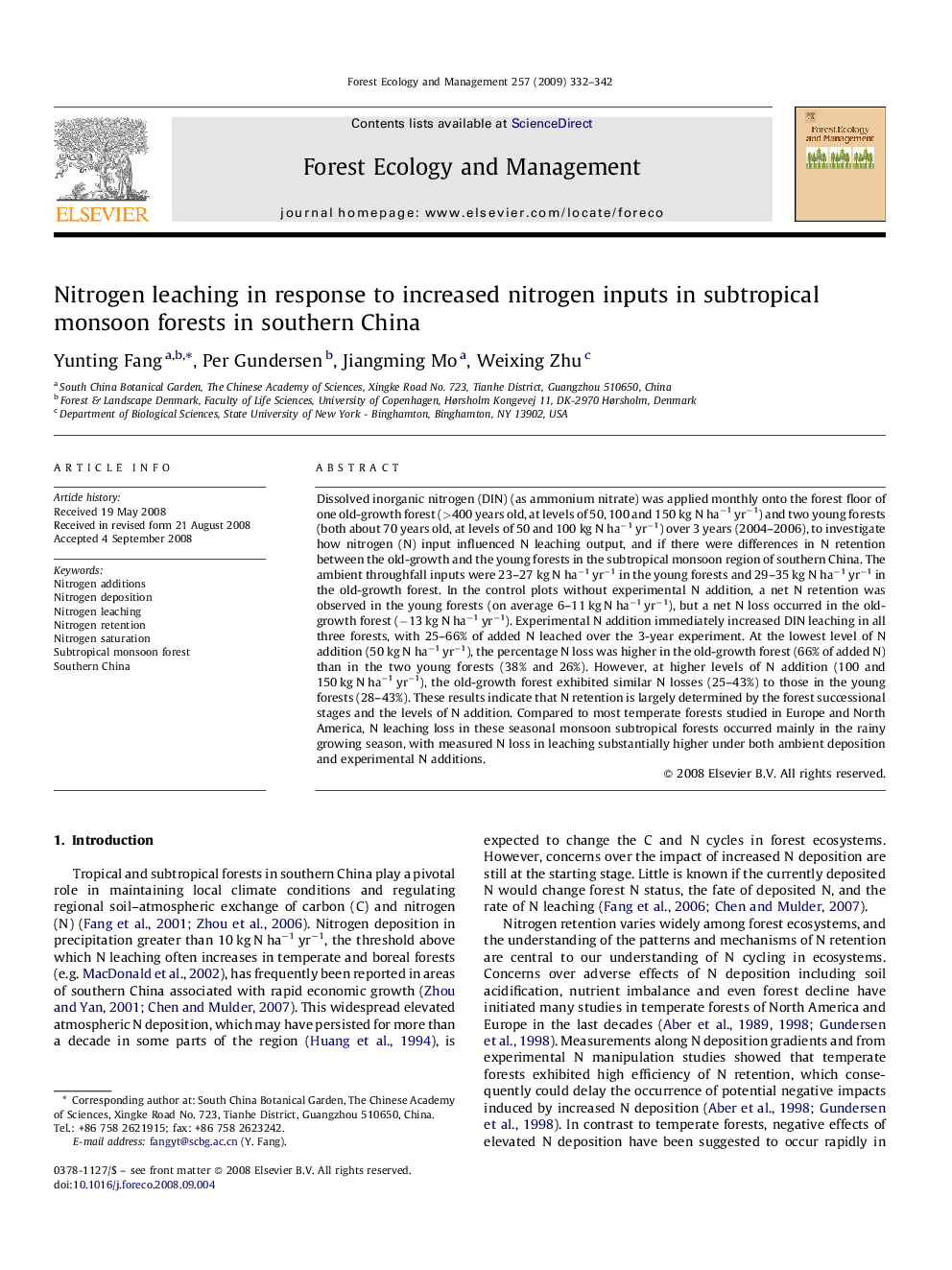| Article ID | Journal | Published Year | Pages | File Type |
|---|---|---|---|---|
| 89163 | Forest Ecology and Management | 2009 | 11 Pages |
Dissolved inorganic nitrogen (DIN) (as ammonium nitrate) was applied monthly onto the forest floor of one old-growth forest (>400 years old, at levels of 50, 100 and 150 kg N ha−1 yr−1) and two young forests (both about 70 years old, at levels of 50 and 100 kg N ha−1 yr−1) over 3 years (2004–2006), to investigate how nitrogen (N) input influenced N leaching output, and if there were differences in N retention between the old-growth and the young forests in the subtropical monsoon region of southern China. The ambient throughfall inputs were 23–27 kg N ha−1 yr−1 in the young forests and 29–35 kg N ha−1 yr−1 in the old-growth forest. In the control plots without experimental N addition, a net N retention was observed in the young forests (on average 6–11 kg N ha−1 yr−1), but a net N loss occurred in the old-growth forest (−13 kg N ha−1 yr−1). Experimental N addition immediately increased DIN leaching in all three forests, with 25–66% of added N leached over the 3-year experiment. At the lowest level of N addition (50 kg N ha−1 yr−1), the percentage N loss was higher in the old-growth forest (66% of added N) than in the two young forests (38% and 26%). However, at higher levels of N addition (100 and 150 kg N ha−1 yr−1), the old-growth forest exhibited similar N losses (25–43%) to those in the young forests (28–43%). These results indicate that N retention is largely determined by the forest successional stages and the levels of N addition. Compared to most temperate forests studied in Europe and North America, N leaching loss in these seasonal monsoon subtropical forests occurred mainly in the rainy growing season, with measured N loss in leaching substantially higher under both ambient deposition and experimental N additions.
